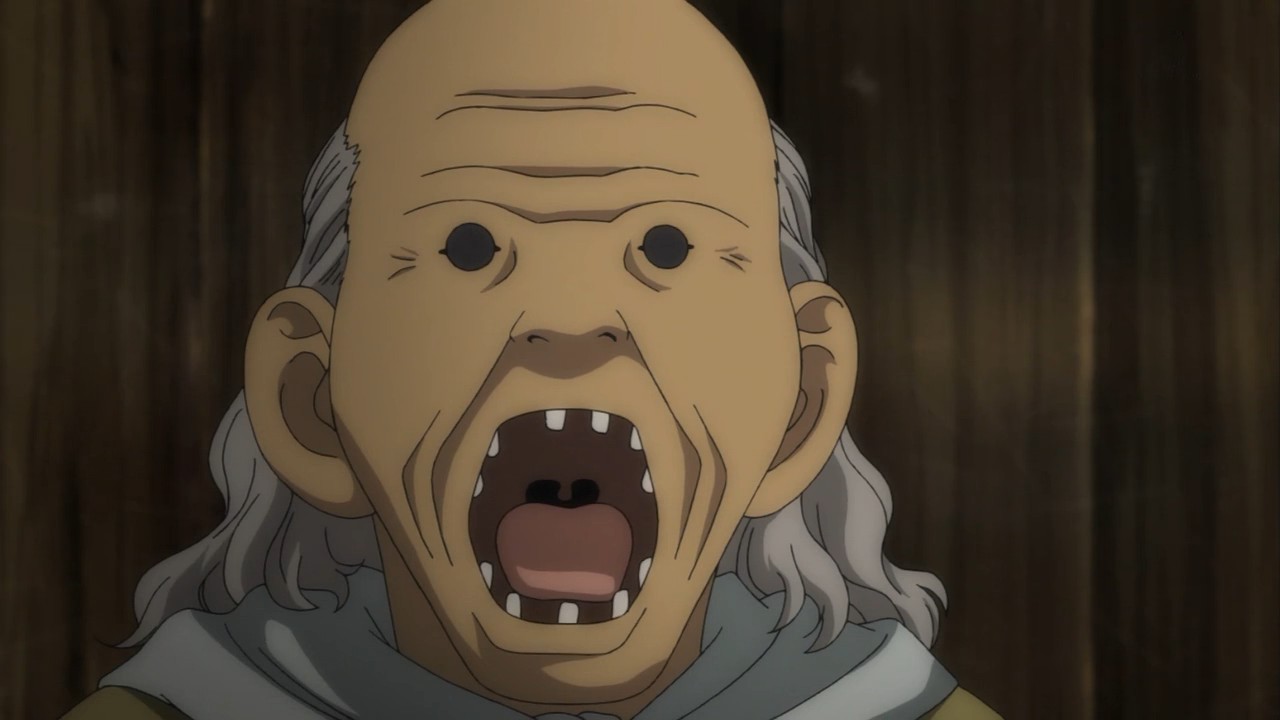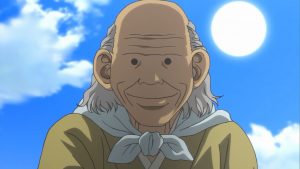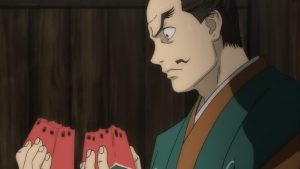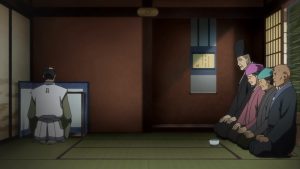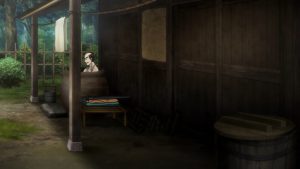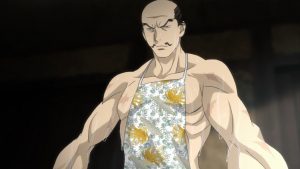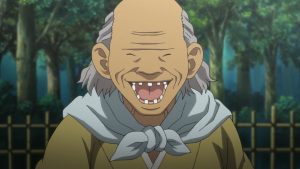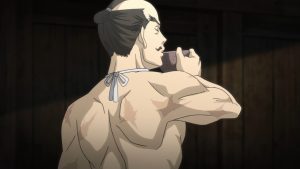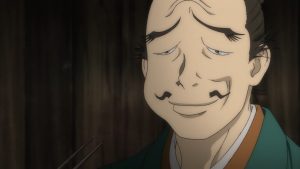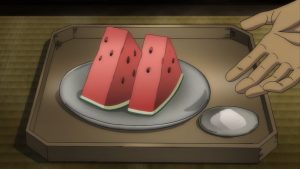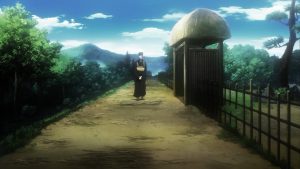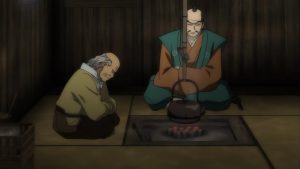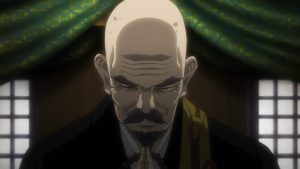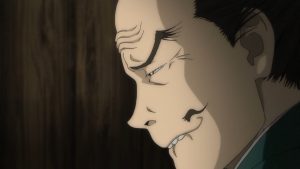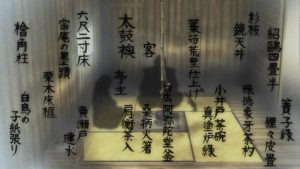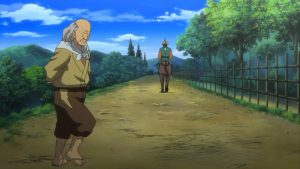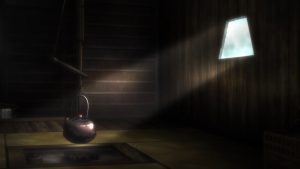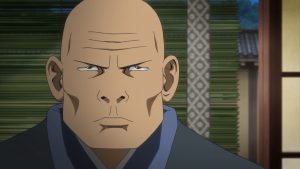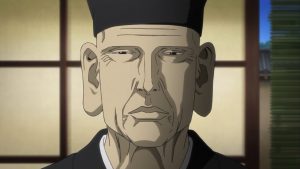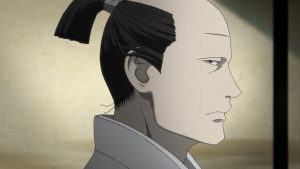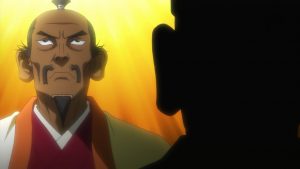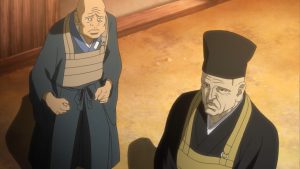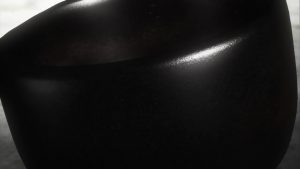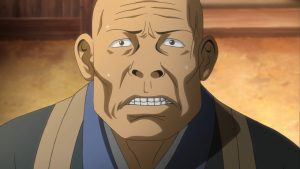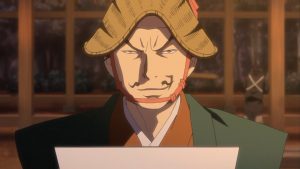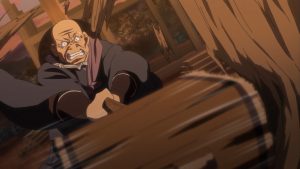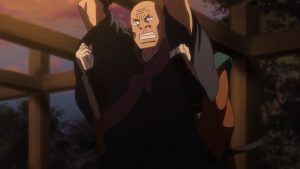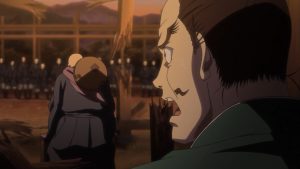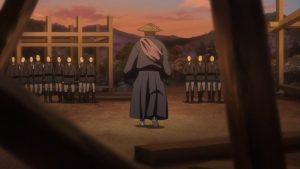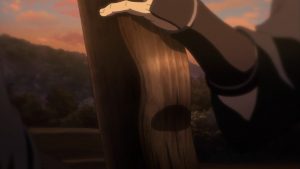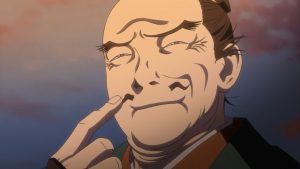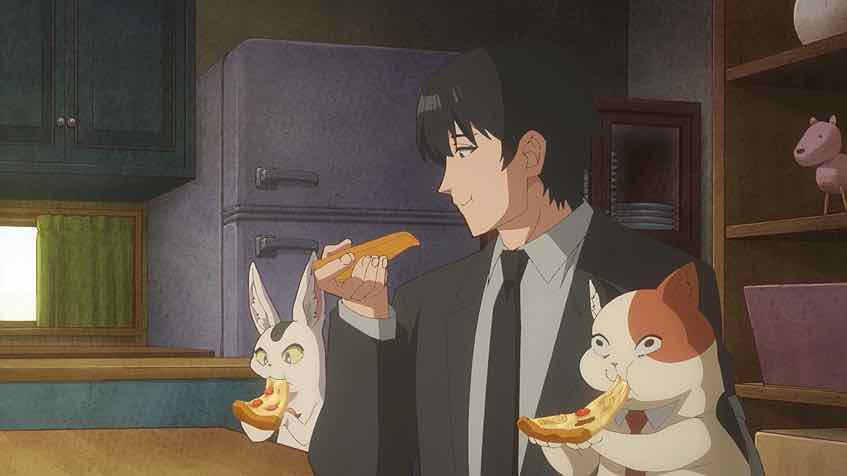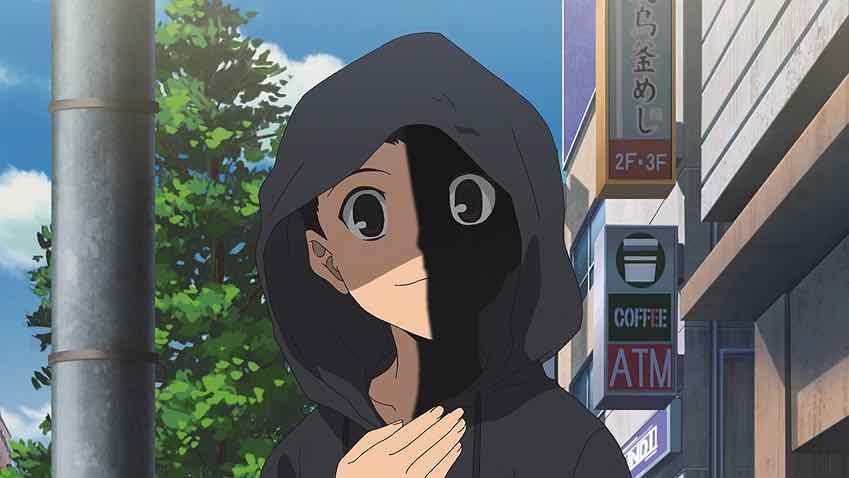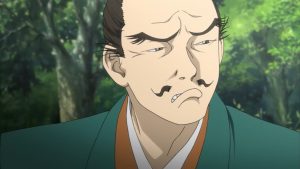 It’s easy for us now, with the remove of four centuries, to dismiss events like we see in Hyouge Mono as flights of dramatic (and comedic) fancy. But while this show and the manga it’s based on certainly take some creative license with history, the essence of it is surprisingly accurate. It’s hard to overstate how important the way of tea and aesthetics generally were in court life at the end of the 16th-century. Careers rose and fell with one’s reputation as an aesthete, men took their own lives over humiliations connected to the tea ceremony, and great political power was wielded by the likes of Sen no Rikyu who rose to power based on their way with tea.
It’s easy for us now, with the remove of four centuries, to dismiss events like we see in Hyouge Mono as flights of dramatic (and comedic) fancy. But while this show and the manga it’s based on certainly take some creative license with history, the essence of it is surprisingly accurate. It’s hard to overstate how important the way of tea and aesthetics generally were in court life at the end of the 16th-century. Careers rose and fell with one’s reputation as an aesthete, men took their own lives over humiliations connected to the tea ceremony, and great political power was wielded by the likes of Sen no Rikyu who rose to power based on their way with tea.
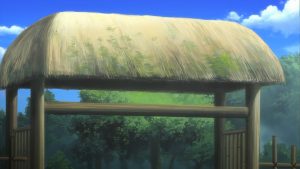 Hechikan (played with aplomb by the late Ishida Tarou) was – like most of the named characters in this series – based on a real person. Hechikan was a tea master who fled the courtly life in Kyoto to pursue a life of simplicity in Yamashina (a short train ride south today). He was an eccentric to say the least, a man who wholeheartedly embraced the primacy of imperfection through wabi-sabi, and eventually gained the admiration and favor of Hideyoshi himself for it. He dared to criticize Sen no Rikyu publicly and did indeed cook porridge in the same pot with which he brewed tea. He also dabbled in poetry:
Hechikan (played with aplomb by the late Ishida Tarou) was – like most of the named characters in this series – based on a real person. Hechikan was a tea master who fled the courtly life in Kyoto to pursue a life of simplicity in Yamashina (a short train ride south today). He was an eccentric to say the least, a man who wholeheartedly embraced the primacy of imperfection through wabi-sabi, and eventually gained the admiration and favor of Hideyoshi himself for it. He dared to criticize Sen no Rikyu publicly and did indeed cook porridge in the same pot with which he brewed tea. He also dabbled in poetry:
Oh, you kettle,
Your mouth is protruding
A little too much.
Don’t tell the others
I cooked porridge in you.
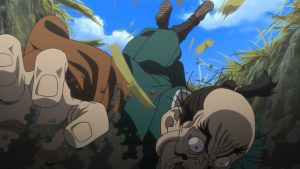 The incident with Sen no Rikyu and the water trap actually took place, and Sen did indeed claim he knew about the trap and elected to play along. As for Sasuke, it doesn’t take a genius to see that there’s a fundamental conflict within him, as his crass materialism does battle with his desperate quest for aesthetic perfection. How much a man like Sasuke – or indeed Sen no Rikyu – is capable of learning from a man like Hechikan is a matter of conjecture, but I think it’s safe to say that Sasuke could never follow the same path Hechikan close to walk.
The incident with Sen no Rikyu and the water trap actually took place, and Sen did indeed claim he knew about the trap and elected to play along. As for Sasuke, it doesn’t take a genius to see that there’s a fundamental conflict within him, as his crass materialism does battle with his desperate quest for aesthetic perfection. How much a man like Sasuke – or indeed Sen no Rikyu – is capable of learning from a man like Hechikan is a matter of conjecture, but I think it’s safe to say that Sasuke could never follow the same path Hechikan close to walk.
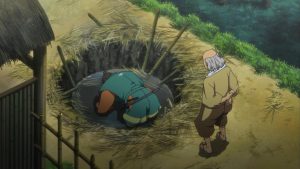 Meanwhile, back in Kyoto, the petty sniping between the various tea masters is a subject of much amusement. Ishida Mitsunari was in Hideyoshi’s close confidence, though he was really known more as a money man than an aesthete. Yamanoue Souji was the tea master to Hidenaga, Hideyoshi’s brother, and his fortunes would indeed start to decline around this time, though whether in truth he thought his master Sen no Rikyu was selling out by backing Hideyoshi I don’t know. Sen was a master of politics as much as tea, and always playing the long game himself.
Meanwhile, back in Kyoto, the petty sniping between the various tea masters is a subject of much amusement. Ishida Mitsunari was in Hideyoshi’s close confidence, though he was really known more as a money man than an aesthete. Yamanoue Souji was the tea master to Hidenaga, Hideyoshi’s brother, and his fortunes would indeed start to decline around this time, though whether in truth he thought his master Sen no Rikyu was selling out by backing Hideyoshi I don’t know. Sen was a master of politics as much as tea, and always playing the long game himself.
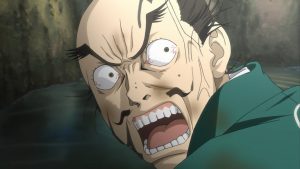 The question of just where Hyouge Mono comes down on all this is one of the most interesting elements of this series. There’s no question it’s pretty unsparing when it comes to the absurdity of some of these antics, but at the same time, this sort of aesthetic pretension is to the this day an intrinsic part of Japanese high culture. There is no conflict between the warrior and the aesthete in this story, really, because the warriors are the aesthetes. The real battle is an internal one, as each of them try and balance the two demands of Japanese nobility during the late Sengoku Period. Some were inclined to one camp, some the other – but to succeed, one had to master both. And that was a test very few of them could pass.
The question of just where Hyouge Mono comes down on all this is one of the most interesting elements of this series. There’s no question it’s pretty unsparing when it comes to the absurdity of some of these antics, but at the same time, this sort of aesthetic pretension is to the this day an intrinsic part of Japanese high culture. There is no conflict between the warrior and the aesthete in this story, really, because the warriors are the aesthetes. The real battle is an internal one, as each of them try and balance the two demands of Japanese nobility during the late Sengoku Period. Some were inclined to one camp, some the other – but to succeed, one had to master both. And that was a test very few of them could pass.


